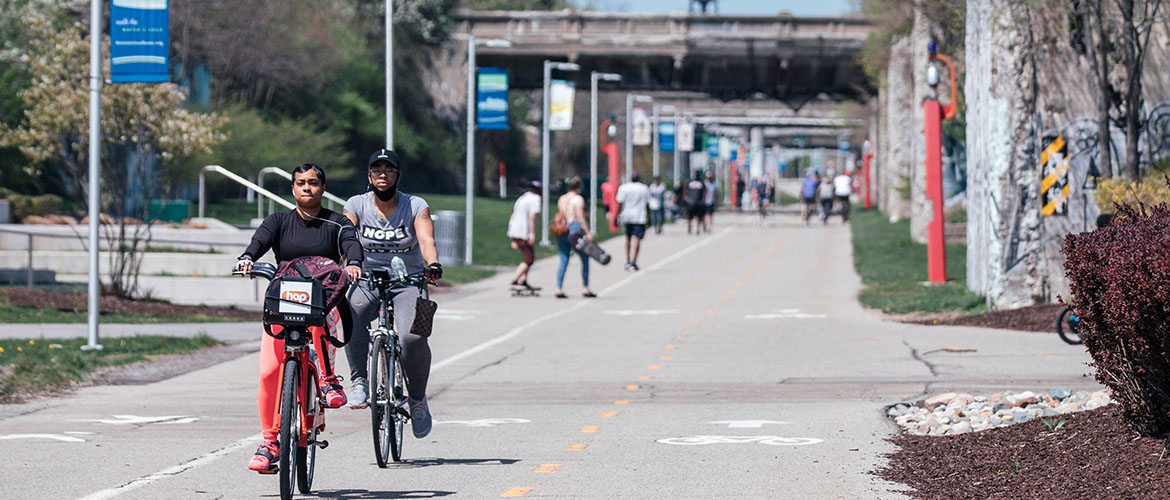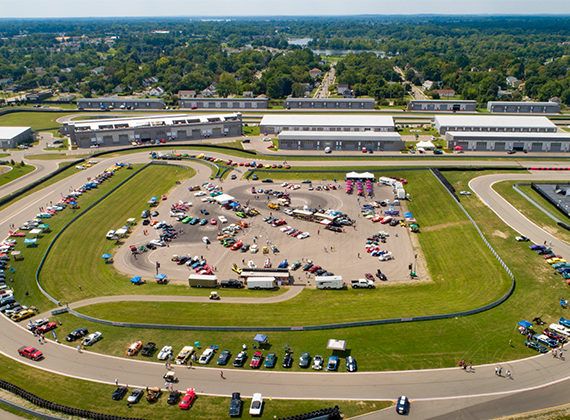The Great Lakes Way

This month, the Great Lakes Way was featured in Crain’s Detroit Business. Currently stretching through 44 different communities, the Great Lakes Way is a series of water trails (blueways) that flow from Port Huron to Toledo, as well as 160 miles of greenways that connect these blueways. While there is a significant portion of the Great Lakes Way completed or currently underway, there are still waterfront areas and land that is inaccessible to the public.
The Community Foundation For Southeast Michigan (CFSEM) is leading the effort in improving the Great Lakes Way. The Foundation has been developing a network of trails for the past 20 years. The Foundation has invested $33 million in foundation and private contributions and has leveraged $125 million in public funding for more than 100 miles of the greenways thus far. The Foundation began focusing on the blueways portion of the route in 2019.
PEA Group assisted CFSEM in developing a vision for the Great Lakes Way that connects Lake Huron and Lake Erie through the Detroit River Corridor. After determining which parts of the route were complete, partially complete, planned route gap, or complete gap, our team developed a report with recommendations for the project’s next steps, including development and maintenance of the website, achieving a national designation, potential connections to bridge the identified route gaps, and worked with community representatives throughout the project area.
In an effort to raise awareness about the Great Lakes Way, CFSEM has engaged with leaders from private and nonprofit organizations and the public, as well as community outreach programs where those who reside along the route can learn more about the route and the goal of CFSEM. CFSEM has reached out to Southeast Michigan Council of Governments, the Detroit Riverfront Conservancy, the Rivers, Trails and Conservation Assistance Program of the National Park Service, and other prominent groups to engage in the project and further connect the community with the Great Lakes Way. Additionally, CFSEM is working with the University of Michigan’s Detroit River Story Lab and U of M’s Taubman College of Architecture and Urban Planning to further refine the route.
Along the trail are a series of cultural attractions such as a renowned sport fishery and important bird habitats designated by the National Audubon Society, as well as historic sites, such as the Historic Fort Wayne, the MotorCities National Heritage Area, the Edsel and Eleanor Ford House, Selfridge Air National Guard Base and Museum, and River Raisin National Battlefield Park. CFSEM seeks to identify to those along the route the value of the Great Lakes Way, both culturally, historically, and economically.
The Great Lakes Way will increase tourism in the surrounding communities, bring new businesses such as restaurants and kayak liveries. Not only is the Great Lakes Way important to both the local communities and the State of Michigan, it could also have a resounding importance to the country as the only stretch of freshwater blueways and greenways in the world. As a result, CFSEM is pursuing a federal designation for the Great Lakes Way, much like the Pacific Crest Trail or the Appalachian Trail.
While the project continues to develop, 156 miles of established water trails have been identified for visitors to utilize the gem that is the Great Lakes Way blueways.
About the Community Foundation For Southeast Michigan (CFSEM)
Established in 1984, the Community Foundation For Southeast Michigan (CFSEM) seeks to better the residents of Wayne, Oakland, Macomb, Monroe, Washtenaw, St. Clair, and Livingston counties. The Foundation supports numerous projects and opportunities in the area. They have distributed more than $1 billion through more than 67,000 grants to nonprofit organizations within the surrounding counties.
For More Information

